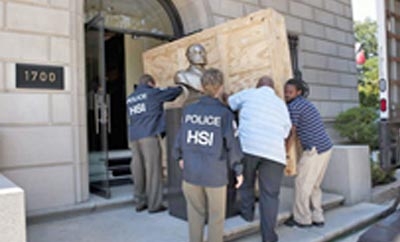United Nations heritage body UNESCO has praised Peru’s efforts in fighting the illegal trading of patrimonial artifacts, a crime that by nature is difficult to adequately address.
Magaly Robalino Campos, the United Nations Educations Science and Cultural Organization (UNESCO) representative in Peru, told Agencia Andina that the international body recognized Peru’s interdiction efforts on a “governmental level, in civil society and by local governments,” adding that the country has a high awareness of cultural value.
The country has extensive legislation and measures to combat the practice, including the 2014 General Law on the Nation’s Cultural Patrimony (pdf), the adoption of international conventions such as the 1995 UNIDROIT Convention (pdf) and a “Red List” of artifacts to help with the identification and protection of these items.
Peru has collaborated with both UNESCO and the Spanish Agency of International Development Cooperation (AECID), and has worked on various awareness campaigns within its borders.
InSight Crime Analysis
The extent of this type of trafficking in Peru is largely due to the wealth of its historical patrimony, which boasts priceless artifacts from the Pre-Columbian, Andean Baroque and Colonial periods.
SEE ALSO: Peru News and Profiles
Artifacts from Latin America are stolen or excavated — often by the locals themselves — from archaeological sites, churches and museums. Despite security efforts such as airport and border checks and inter-institutional cooperation, the objects consistently reach foreign markets, in which collectors will often turn a blind eye to obtain the highly sought after objects.
In other cases the artifacts are integrated into the legal trade and acquired by unwitting buyers, for example at auctions. This has at times provoked strong opposition from the countries of origin, as was the case when a controversial collection of pre-Columbian art was denounced as stolen by Peru, Mexico, Guatemala and Costa Rica. The artifacts in this collection were later sold at about $10 million less than their estimated worth.
In the past few decades, the trade in cultural artifacts has also been used for money laundering purposes by drugs and arms traffickers, according to Peru’s Ministry of Culture.
The illegal international trade of patrimonial goods is reportedly worth $40 billion and Peru’s ambassador to UNESCO, Manuel Rodriguez Cuadros, has claimed it is the biggest transnational crime after drugs and arms trafficking. Nonetheless, INTERPOL states that it is hard to determine any accurate figures, and it seems unlikely the trade is worth more than other criminal activities such as illegal mining.

